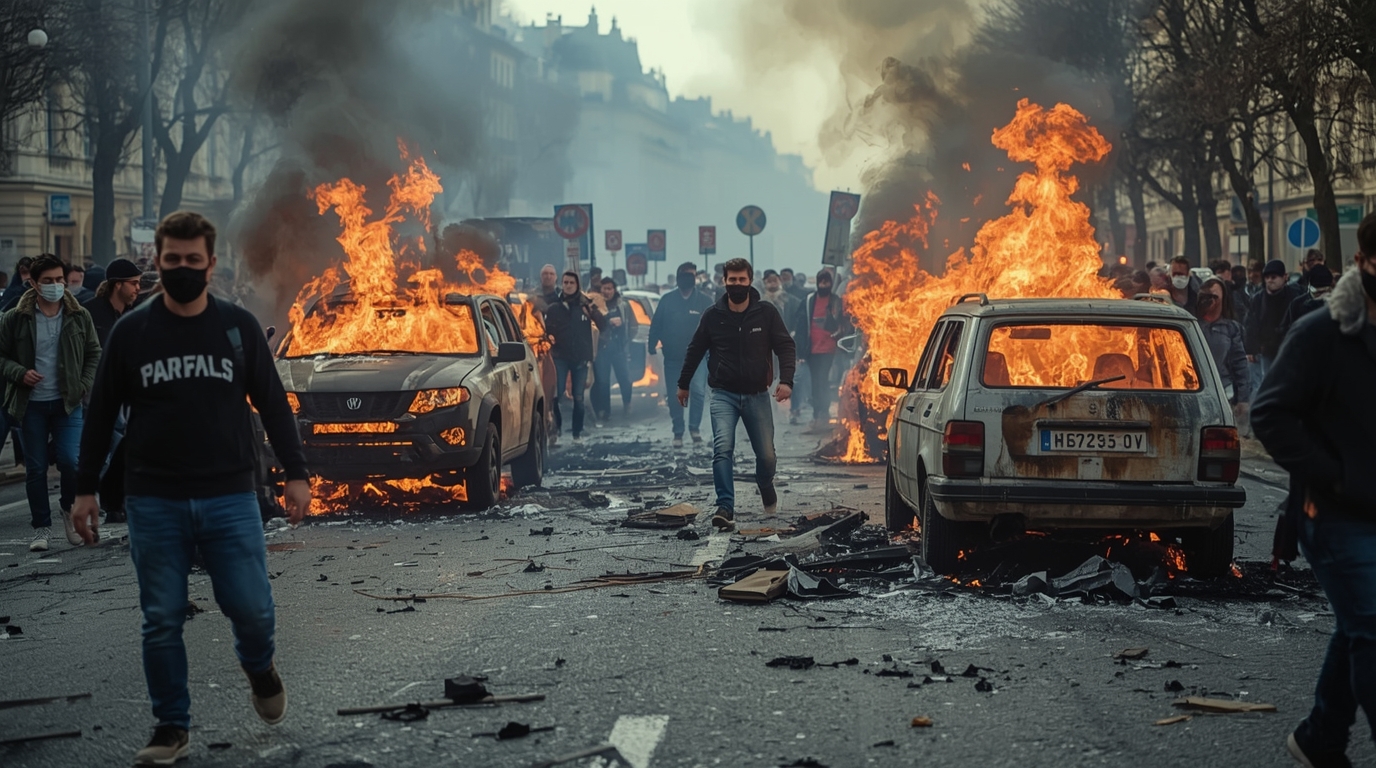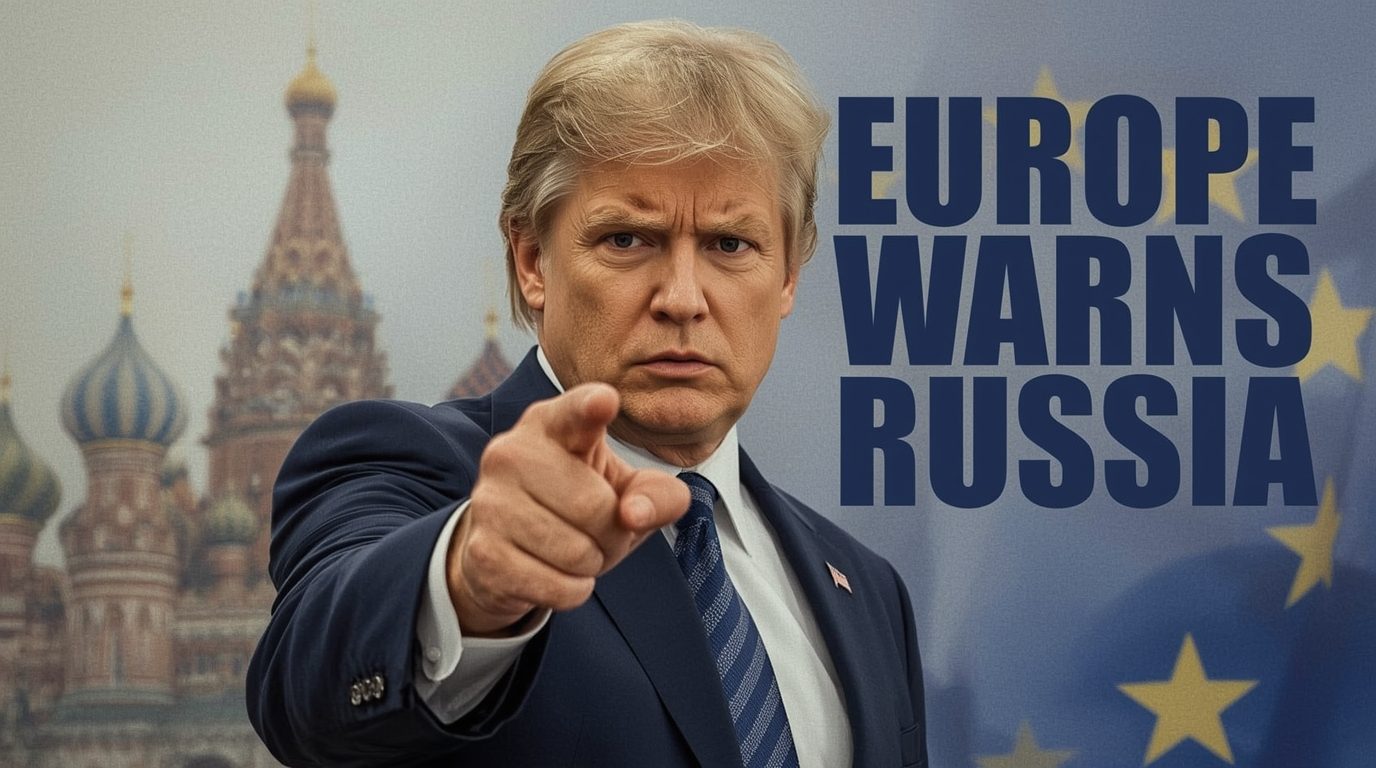‘Block Everything’ France Protest: Close to 200 Arrested, Vehicles Set Ablaze
France Protest is once more under civil unrest, this time triggered by the “Bloquons Tout” or “Block Everything” campaign. Launched from summer chats on social media and encrypted apps, the movement is calling out economic unfairness, unpopular reforms, and broader dissatisfaction through nationwide roadblocks.
France Protest, Traffic jams and fires marked the capital, Paris, through to cities like Rennes, Lyon, and Marseille. Protesters erected barricades, set cars ablaze, and clashed with police using bricks and metal. Interior Minister Bruno Retailleau reported nearly 200 arrests within the protest’s opening hours, as officers raced to control the fast-spreading chaos.
Despite the disruption, the “Block Everything” goal wasn’t fully reached. Still, the number of hot spots all over France showed how well a leaderless, decentralized protest movement can organize. The government sent an extraordinary 80,000 police to keep order, yet protesters kept pushing to see how much the authorities could take.
Protest Dynamics and Early Incidents
One of the first and most obvious clashes took place in Rennes, the western part of the country. There, a bus went up in flames, and police said a nearby power line was damaged. That was enough to halt train services on a major southwestern corridor. In Paris, demonstrators tried to block the beltway at the height of the morning rush. They piled up old road barriers and abandoned cars to make makeshift barricades. Officers responded with tear gas and a number of arrests.
Retailleau called the latest protests attempts to “create a climate of insurrection,” a phrase that shows how worried the government is, both about the disruptions today and the political fallout that could follow. The outcry erupted just as the parliament was already in turmoil. Two days earlier, Prime Minister François Bayrou lost a confidence vote. The next morning President Emmanuel Macron named Sébastien Lecornu as the new premier, leaving Lecornu to navigate a violent welcome already named “Bloquons Tout.”
From Social Media to Streets: The Rise of “Block Everything”
“Bloquons Tout” started as a simple hashtag over the summer and quickly moved to encrypted chats, proof that these protests can grow without a front-page face. There is no recognizable leader, and that seems to help rather than hinder its power. Old and young, rural and urban, the crowd has joined forces around a wide list of grievances. Some focus on the tax hikes and budget cuts laid out by Bayrou; others argue that the government ignores the daily life of workers, the unemployed, and the squeezed middle class. The thread that links them is a deep vertigo of growing inequality.
The way the “Block Everything” protests sprung up is a lot like the yellow vest movement of 2018, which started when the French government tried to raise fuel taxes. Back then, workers took over roundabouts, zipping on their yellow safety vests, and the action quickly grew to include anyone who felt the sting of rising inequality and discontent with government tax reforms.
This new movement, in contrast, never settled on a formal leadership. “Block Everything” stays loose and bottom-up, using the power of viral social media plus encrypted apps to rally people. Messages fly through secure platforms to plan school strike dates, share lists of planned blockades, and keep teams in the know about locations and times.
France Protest impact was seen coast to coast on Wednesday. Railways ground to a halt, main highways slowed to a crawl, and even small suburbs felt the disruption. In Paris, the metro squeaked to a stop, and buses moved gingerly through sea of foot traffic. Police moved in to break the lines, blockades were torn down, and several people were taken into custody. Yet the sheer speed of the protests showed how easily a city’s routines can tilt when people come together online and then meet at blocker points, turning maps into schedules on the fly.
Because of the France Protest, rail services were disrupted by coordinated sabotage and barricades laid on key rail lines. In Rennes, a damaged power cable brought regional trains to a standstill within minutes, while other cities reported fires set to cars, trash containers, and other municipal fixtures. The growing logistical and economic toll of the disruptions is projected to rise, burdening government leaders who are already facing considerable political turbulence.
Context: Protests—Part of France’s DNA
Protest has been a defining part of French civic life and a traditional tool for political engagement. The nation’s history is punctuated by moments when crowds took to the streets, from the revolutionary outbursts of the late 18th century to the work stoppages and campus marches of the 20th century. More recently, the yellow vest movement of late 2018 and early 2019 opened a new chapter by showing how quickly social media can rally and keep alive a broad-based public action.
“Block Everything” picks up the lessons of earlier protests and rewrites the rulebook for the digital age. By mixing decentralized leadership, viral posts, and loose command structures, the movement stays a step ahead of officials used to tighter controls. While the older generations of protests relied on big names and formal hierarchies, this one grows and shifts online—quick, spontaneous, and strikingly visible, making it tricky for anyone to guess what will happen next.
Official Response: Police and Public Officials
The French state countered the mobilizations with a three-part playbook: beefed-up policing, strategic communication, and emergency rules to shield critical infrastructure. Some 80,000 officers were deployed—“unprecedented” in the view of Interior Minister Retailleau—who stressed the need for an adaptive force ready to knock down fires, tear down barricades, and neutralize other immediate threats to the public. Security cordons quickly enclosed the areas officials flagged as most at risk. When tear gas cleared a block and officers handcuffed suspects on the spot, the message was the same: the state will not allow unrest to block roads or bin collections or to put life in danger. Both Retailleau and President Macron condemned the ruins left behind and urged the movement to “dialogue” and to “show restraint.”
Police and fire crews from coast to coast had an impossible-sounding job: plan for protests that can boil over in any neighborhood without a single leader in charge. Prep details stretched across city halls, subway networks, and bus schedules. Anyone trying to get to work or get groceries quickly felt that supply-chain sideswipe before a single chant went off in the streets.
Frustrations that Fuel the Flame
“Block Everything” didn’t pop up overnight. Ask a random marcher to explain, and the top three complaints will be the same: budget slap-downs that squeeze classrooms, subway break rooms, and clinics, a grocery-bill stomach punch, and a paycheck that barely keeps ups anymore. Prime Minister Bayrou may have pitched his spending trims as the sharpest way to nosh grants from overseas officials, but in murmurs and hashtags the plan smashed public transport, scattered special programs in schools, and cut corners on social benefits.
Under that shiny headline, plenty of average moms, next-gen tradesworkers, and digital gig drivers see even bigger worries. Rent ceilings list up and job-support programs pull the rug. The marchers pick a single rule or budget cut to draw a circle, yet the real score they want to see is a promise that politics will give the same aggressive airtime to job shrink and social stall the online calendar already does. Experts think it’s a crash course in tweeting a better bargain, and the future conversations in assembly halls and parliament might even stick.
Comparisons with Past Movements
Though “Block Everything” bears some similarities to the yellow vest protests, it stands apart in three important ways. First, the use of social media and encrypted messaging lets protestors mobilize quickly, sidestepping established leadership structures. Second, the range of targeted disruption has grown, reaching beyond roads and railways to include water, electricity, and other public services. Third, the protests feel more spontaneous, with fewer coordinated slogans or demands, so it is harder for officials to negotiate or to forecast what might happen next.
Analysts suggest that both protests illustrate a bigger pattern in contemporary unrest: where online organizing and on-the-ground actions converge. Through hashtags, live feeds, and viral posts, digital networks spread anger, organize marches in real time, and show the world events within minutes, putting extraordinary pressure on lawmakers and agencies.
Political Implications and Macron’s Leadership
The emergence of “Block Everything” is especially complicated for Macron because it comes soon after a new prime minister formed a cabinet, following the disintegration of Bayrou’s government. The president now has to stabilize his administration while managing his most severe public crisis to date. The upheaval tests both his authority and the endurance of police tactics, while putting key state functions to a severe strain. Lawmakers, ministers, and bureaucracy must find ways to keep daily operations running in the face of coordinated sabotage that comes with little warning.
Political observers point out that Emmanuel Macron’s 2022 re-election seemed to promise a stable backing for his agenda, yet mounting frustration over economic reforms, widening inequality, and persistent social justice grievances has since weakened voter trust. As the protests unfold, their pressure could spill into future parliamentary discussions, shaping budget priorities and steering broader policy choices, especially as the administration juggles the dual goals of prudent finances and demands for stronger social safety nets.
Public safety stood high on the agenda as protests erupted. Emergency crews were dispatched to tackle fires, clear roadblocks, and deal with other hazards, illustrating the intricate ballet of deploying police, firefighters, and city workers to dozens of protest sites at once. Public transit authorities then stepped in, advising riders to expect significant delays, encouraging residents to steer clear of affected neighbourhoods, and rolling out temporary schedules to limit overall disruption. Likewise, hospitals and health networks were put on standby, prepared to treat wound cases or injuries arising from skirmishes or accidents that could break out amid the turbulent demonstrations.
The Role of Social Media in Modern Protest Movements
Social media has become the backbone of the “Block Everything” protests. Encrypted apps let organizers chat in private, send instant updates, and stash supplies on the fly. Channels like Twitter, Facebook, and Telegram share protest plans and step-by-step guides in seconds, allowing the movement to shift and adapt whenever authorities strike. Because this information travels so fast, authorities can to try to ban one route today and the protest can simply try another one tomorrow.
Thanks to these tools, the movement doesn’t need one steering committee. Anyone can announce a protest, and the group stays united through memes, hashtags, and identical symbols. The same apps expand the protests out of the streets and onto world stages, attracting attention that puts real pressure on decision-makers at home and abroad.
Conclusion: France at a Crossroads
The “Block Everything” protests mark a new chapter in France’s long history of protests. They merge worries about rising costs, shaky politics, and the power of digital crowds. The opening hours saw almost 200 arrests, cars ablaze, barricades in the streets, and public services on notice—all showing the promise and the pitfalls of protests shaped in apps more than halls.
For President Macron and newly appointed Prime Minister Sébastien Lecornu, the crowd on the pavement is impossible to ignore: French citizens remain stubbornly awake, loud, and ready to march the moment they believe the economy or their daily lives feel unfair. Restoring calm is the job, no question, Yet the real balancing act lies in solving the long-standing wrongs that keep sending people into the streets. Whatever happens next could steer the next chapter of French politics and everyday society.
While the government works out these knots, people across the globe watch to see how leaderless, smartphone-mastered protests unfold. The “Block Everything” campaign is proof that a single tweet can rally a crowd across an entire country and shut down a heartland. In an instant, France shows the world how quickly a national outraged can turn viral, announcing a new, fast-moving chapter in democratic discussion—not ending at the border, but likely writing the next page of activism everywhere.
Stay updated with reliable news:
Sports: Sport Flash HQ
Business: Biz Rush
Weather: The Climate Post
Travel: Neon Report
US Local: 24 Hour Bulletin
India Finance: The Lucky Ledger
General: The Chrono Post



